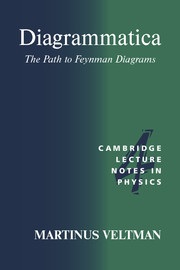Book contents
- Frontmatter
- Contents
- Introduction
- 1 Lorentz and Poincaré Invariance
- 2 Relativistic Quantum Mechanics of Free Particles
- 3 Interacting Fields
- 4 Particles with Spin
- 5 Explorations
- 6 Renormalization
- 7 Massive and Massless Vector Fields
- 8 Unitarity
- 9 Quantum Electrodynamics: Finally
- Appendix A Complex Spaces, Matrices, CBH Equation
- Appendix B Traces
- Appendix C Dimensional Regularization
- Appendix D Summary. Combinatorial Factors
- Appendix E Standard Model
- Appendix F Metric and Conventions
- Index
Introduction
Published online by Cambridge University Press: 01 June 2011
- Frontmatter
- Contents
- Introduction
- 1 Lorentz and Poincaré Invariance
- 2 Relativistic Quantum Mechanics of Free Particles
- 3 Interacting Fields
- 4 Particles with Spin
- 5 Explorations
- 6 Renormalization
- 7 Massive and Massless Vector Fields
- 8 Unitarity
- 9 Quantum Electrodynamics: Finally
- Appendix A Complex Spaces, Matrices, CBH Equation
- Appendix B Traces
- Appendix C Dimensional Regularization
- Appendix D Summary. Combinatorial Factors
- Appendix E Standard Model
- Appendix F Metric and Conventions
- Index
Summary
In recent years particle theory has been very successful. The theory agrees with the data wherever it could be tested, and while the theory has its weak spots, this numerical agreement is a solid fact. Physics is a quantitative science, and such agreement defines its validity.
It is a fact that the theory, or rather the successful part, is perturbation theory. Up to this day the methods for dealing with non-perturbative situations are less than perfect. No one, for example, can claim to understand fully the structure of the proton or the pion in terms of quarks. The masses and other properties of these particles have not really been understood in any detail. It must be added that there exists, strictly speaking, no sound starting point for dealing with non-perturbative situations.
Perturbation theory means Feynman diagrams. It appears therefore that anyone working in elementary particle physics, experimentalist or theorist, needs to know about these objects. Here there is a most curious situation: the resulting machinery is far better than the originating theory. There are formalisms that in the end produce the Feynman rules starting from the basic ideas of quantum mechanics. However, these formalisms have flaws and defects, and no derivation exists that can be called satisfactory. The more or less standard formalism, the operator formalism, uses objects that can be proven not to exist.
- Type
- Chapter
- Information
- DiagrammaticaThe Path to Feynman Diagrams, pp. xi - xiiPublisher: Cambridge University PressPrint publication year: 1994

